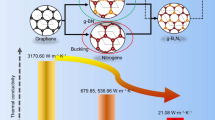Abstract
Novel and more conventional boron carbides were combined with n-type silicon to make heterojunction diodes, with neutron capture signal at zero applied bias. The boron carbides were based on the cross linking of closo-1,2-dicarbadodecaborane (ortho-carborane; 1,2-B10C2H12), and cross linking based on the combination of closo-1,2-dicarbadodecaborane (ortho-carborane; 1,2- B10C2H12) and pyridine. In the latter devices, pyridine concentration was varied; samples with a closo-1,2-dicarbadodecaborane (ortho-carborane; 1,2- B10C2H12) to pyridine ratio of 1:1 (BC:Py1) and 1:3 (BC:Py3). The result is a nonvolatile robust p-type semiconductor of boron carbide (B10C2Hx):(C5NHx)y. The I(V) curves for the resulting heterojunction diodes exhibit strong rectification where the normalized reverse bias leakage currents are largely unperturbed with increasing pyridine inclusion. The devices are largely gamma insensitive and yet neutron voltaic properties of these boron carbides is demonstrated. The neutron capture generated pulses from these heterojunction diodes were obtained at zero bias voltage although without the characteristic signatures of complete charge collection from boron neutron capture generated electron-hole pair production. These results, nonetheless, suggest that modifications to boron carbide may result in better neutron voltaic materials with linking groups chosen from family of aromatic compounds that stretch between borazine (B3N3H6) and benzene that point the way to a whole family of future studies that may ultimately lead to boron carbides better suited to low power and low flux neutron detection.
Similar content being viewed by others
References
A.N. Caruso, J.Phys. Condens. Matter. 22 (2010) 1–32. doi: 10.1088/0953-8984/22/44/443201.
A.N. Caruso, R.B. Billa, S. Balaz, J.I. Brand, P.A. Dowben, J.Phys.Condens. Matter. 16 (2004) L139–L146. doi: 10.1088/0953-8984/16/10/L04.
B.W. Robertson, S. Adenwalla, A. Harken, P. Welsch, J.I. Brand, P.A. Dowben, J.P. Claassen, Appl. Phys. Lett. 80 (2002) 3644–3646. doi: 10.1063/1.1477942.
B.W. Robertson, S. Adenwalla, A. Harken, P. Welsch, J.I Brand, J.P. Claassen, N.M. Boag, P.A. Dowben, Proc. SPIE 4785 (2002) 226–233. doi: 10.1117/12.453923.
S. Adenwalla, R. Billa, J.I. Brand, E. Day, M.J. Diaz, A. Harken, A. McMullen-Gunn, R. Padmanabhan, B.W. Robertson, Proc. SPIE 5199 (2004) 70–74. doi: 10.1117/12.506646.
K. Osberg, N. Schemm, S. Balkir, J.I. Brand, M.S Hallbeck, P.A. Dowben, M.W. Hoffman, IEEE Sens. J. 6 (2006) 1531–1538. doi: 10.1109/JSEN.2006.883905.
K. Osberg, N. Schemm, S. Balkir, J.I Brand, M.S. Hallbeck, P.A. Dowben, IEEE Int. Symp. Circ. S (2006) 1179–1182. doi: 10.1109/ISCAS.2006.1692801.
A.N. Caruso, P.A. Dowben, S. Balkir, N. Schemm, K. Osberg, R.W. Fairchild, O.B. Flores, S. Balaz, A.D. Harken, B.W. Robertson, J.I. Brand, Mater. Sci. Eng. 135 (2006) 129–133. doi: 10.1016/j.mseb.2006.08.049.
E. Day, M.J. Diaz, S. Adenwalla, J. Phys. D: Appl. Phys. 39 (2006) 2920–2924. doi: 10.1088/0022 3727/39/14/007.
N. Hong, J. Mullins, K. Foreman, S. Adenwalla, J. Phys. D: Appl. Phys. 43 (2010) 275101. doi: 10.1088/0022-3727/43/27/275101.
D. Simeone, C. Mallet, P. Dubuisson, G. Baldinozzi, C Gervais, J. Maquet, J. Nuclear Materials 277 (2000) 1–10. doi: 10.1016/S0022-3115(99)00149-X.
D. Emin, Journal of Solid State Chemistry 179 (2006) 2791–2798. doi: 10.1016/j.jssc.2006.01.014.
M. Carrard, D. Emin, and L. Zuppiroli, Phys. Rev. 51 (1995) 11270–11274. doi: 10.1103/PhysRevB.51.11270.
A. N. Caruso, J. I. Brand, P.A. Dowben, Boron carbide particle detectors, United States Patent 7,368,794, issued May 6, 2008.
F. L. Pasquale, Y. Li, J.C. Du, J.A. Kelber, J.Phys. Cond. Matter 25 (2013) 105801. doi: 10.1088/0953-8984/25/10/105801.
F. L. Pasquale, R. James, R. Welch, E. Echeverria, P. A. Dowben, J. A. Kelber, ECS Transactions 53 (2013) 303–310. doi: 10.1149/05301.0303ecst.
F.L. Pasquale, J. Liu, P.A. Dowben, J.A. Kelber, Materials Chemistry And Physics 133 (2012) 901–906. doi: 10.1016/j.matchemphys.2012.01.114.
Frank A. Valente and Herbert Ivan Zagor, Phys. Rev. 69 (1946) 55. doi: 10.1103/PhysRev.69.55.
G. A. Bartholomew and P. J. Campion, Canadian Journal of Physics 35 (1957) 1347. doi: 10.1139/p57-147.
J. Meissner, H. Schatz, H. Herndl, M. Wiescher, H. Beer, F. Käppler, Phys. Rev. C 53 (1996) 977. doi: 10.1103/PhysRevC.53.977.
E. T. Jurney, J. W. Starner, J. E. Lynn, S. Raman, Phys. Rev. C 56 (1997) 118. doi: 10.1103/PhysRevC.56.118.
H. I. Zagor, F. A. Valente, Physical Review 67 (1945) 133.
R. James; F.L. Pasquale, J.A. Kelber, Journal of Physics: Condensed Matter 25 (2013) 355004. doi:10.1088/0953-8984/25/35/355004.
E. Echeverria, F.L. Pasquale, J.A. Colón Santana, L. Zhang, R. James, A. Sokolov, J.A. Kelber, and P.A. Dowben, Mat. Lett. 110 (2013) 20–23. doi: 10.1016/j.matlet.2013.08.009.
E. Echeverría, R. James, U. Chiluwal, F. L. Pasquale, J. A. Colón Santana, R. Gapfizi, J.-D. Tae, M. S. Driver, A. Enders, J. A. Kelber and P.A. Dowben, Applied Physics A (2014), in press; DOI 10.1007/s00339-014-8778-4.
Acknowledgments
This work was supported by the Defense Threat Reduction Agency (Grant No. HDTRA1-09-1-0060), and the National Aeronautics and Space Administration through grant 13-EPSCoR-0012. The authors would like to thank Adrien LaVoie for supplying the Si(100) wafers and Shireen Adenwalla for technical assistance and discussion, Gregory S. Engel for the suggestion of pyrazine, and A.N. Caruso, for suggestions regarding the signal to noise issues.
Author information
Authors and Affiliations
Rights and permissions
About this article
Cite this article
Echeverria, E., James, R., Pasquale, F.L. et al. Neutron Detection Signatures at Zero Bias in Novel Semiconducting Boron Carbide/Pyridine Polymers. MRS Online Proceedings Library 1743, 51–56 (2015). https://doi.org/10.1557/opl.2015.352
Published:
Issue Date:
DOI: https://doi.org/10.1557/opl.2015.352




